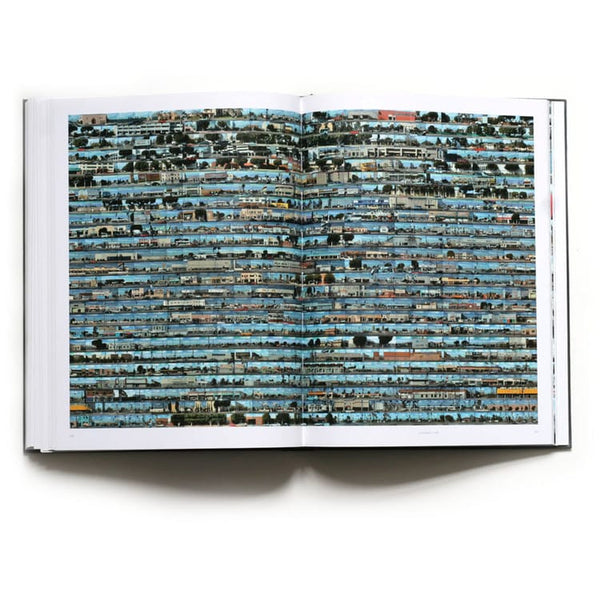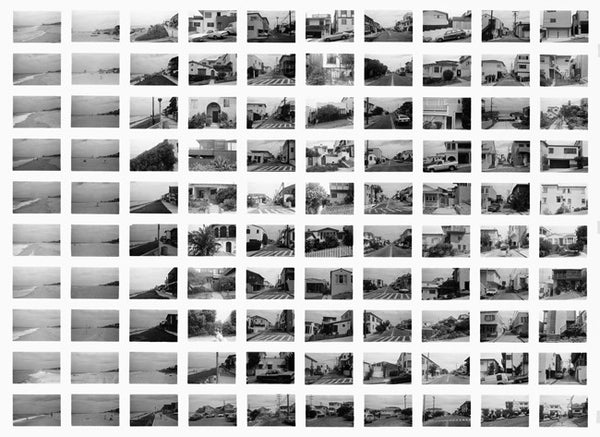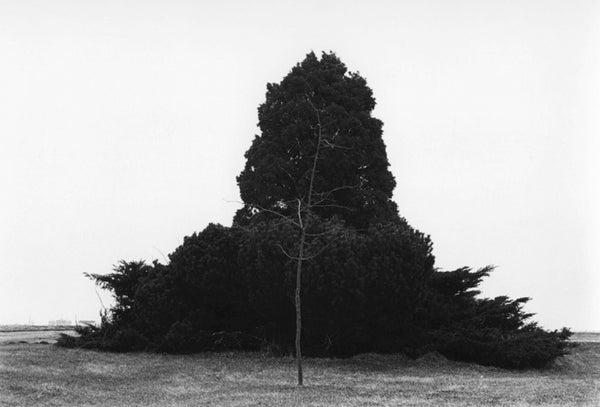




Robbert Flick
Trajectories
LACMA, Los Angeles; Steidl, Göttingen — 2004
Robbert Flick’s work extends the same visual, philosophical, and theoretically fertile arena explored by Robert Heinecken. While Heinecken emphasized the manner in which images function at the intersection of popular culture and the fine arts, Flick has concentrated on the conceptual and receptive properties of photography — specifically landscape photography.
The distinctive visual and conceptual strength of Flick’s work has been evident from his very early essay-format images of the 1960s. Finding a new strength in the evocative diptychs he began in the late 1970s, his investigations led him to begin using grid-format sequential views in order to provide multiple views of images that are visually related but physically separate.
The opportunities offered by digital applications allowed him to extend his participation in the critical discourse established around the interpretation, evaluation, and assessment of visual constructs related to the landscape.
Trajectories traces this important artist’s career from the 1970s to the present, examining his development and charting the conceptual and philosophical impact of contemporary culture on landscape, cultural geography, and technology. Constructed chronologically, the book reveals the cumulative authority of the artist’s creative process and the fluidity of his conceptual dynamic.